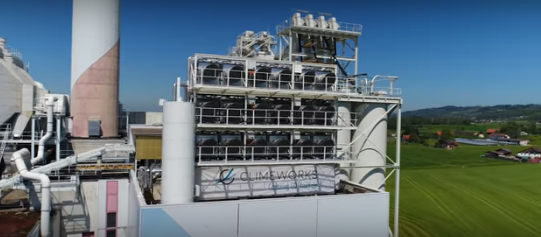Call for ethical examination of negative emissions technologies

Researchers have warned that embarking on negative emissions technologies without considering wider social and environmental implications is a “risky bet” that raises moral hazard issues.
Priestley Chair of Climate Change and Public Policy Jan Minx is co-author of a Nature Comment article calling for the ethical issues around negative emissions technology (NETs) to be evaluated by philosophers working collaboratively with climate scientists.
The authors, led by Dominic Lenzi of the Mercator Research Institute on Global Commons and Climate Change (MCC) in Berlin, also warn of over confidence in regard to the expansion of NETs, suggesting that the technologies’ large-scale applicability may be overestimated in climate models.
The article is particularly relevant in light of the upcoming publication of the Intergovernmental Panel on Climate Change (IPCC) Special Report on 1.5 Degrees, due early October. The application of NETs to meet this target will play a central role in the report.
“Despite the fact that their application raises many ethical questions, there has been a complete lack of ethical evaluation of carbon removal technologies so far,” says lead author Lenzi.
Large-scale afforestation, for example, an important NET, requires so much fertile land that it might jeopardise food security in some parts of the world. Another technique, ocean seeding, leads to an increase in the oceans’ ability to absorb carbon but would interfere with marine ecosystems.
“Ethics does not deal with negative emission technologies because ethicists are generally not aware of the underlying science, or simply don’t pay attention to it,” says Lenzi. “On the other hand, this leads to ethical questions, such as those raised by carbon removal, playing virtually no role in the models of climate scientists.
“As ethicists, we should have discussions on concrete climate pathways. That means looking at what mix of emissions reduction, carbon removal and adaptation is desirable from an ethical viewpoint.”
Climate debates in philosophical ethics are too abstract, according to the researchers. Traditionally they have revolved around the responsibilities of states to fund mitigation and adaptation, whether the polluter pays and who has the ability to pay.
“We need a cultural change – both in the work of philosophers and in climate research,” says co-author Martin Kowarsch of MCC. “For this, we need an interdisciplinary collaboration between climate science and ethics.”
The IPCC’s various model-based climate paths – the so-called “scenarios”, which frequently rely on the use of carbon dioxide [CO2] removal technologies – should be discussed in three respects says Priestley’s Jan Christoph Minx, who is also head of working group Applied Sustainability Science at MCC.
“Firstly, NETs raise a “moral hazard” problem. Policy makers may get the impression that they can take their time with climate protection measures. After all, the thinking might be, we can simply just extract excess emissions from the air in the future.”
In scenarios without CO2 removal by NETs, emissions would need to be reduced relatively rapidly to almost half of the current level, around 23 gigatonnes per year, by 2030. With CO2 removal, emissions would only need to be reduced slowly to around 32 gigatonnes by the same year, which is a little less than the current level.
The authors also warn that NETs are a “risky bet” as the current state of research and development is lagging far behind model assumptions. The scenarios often assume rapid technological progress and a massive expansion of the technologies in the coming decades, whereas, “The actual, large-scale applicability of negative emission technologies is limited thus far,” says Prof Minx. To date, there have only been a few pilot projects.
Finally, the researchers draw attention to over-confidence underlying the models, pointing out that our actual ability – even in the future – to extract enormous quantities of CO2 from the atmosphere may be overestimated.
The models assume that we will be able to manage “an artificial carbon sink that is larger than the entire land sink today,” they write in a figure captioned “Three-fold folly”, warning that “potential feedback mechanisms and tipping points are poorly understood, such as whether temperature overshoot might trigger permafrost melting.”
Image: the world's first direct carbon capture plant in Switzerland removes carbon dioxide from ambient air (credit: Climeworks)
